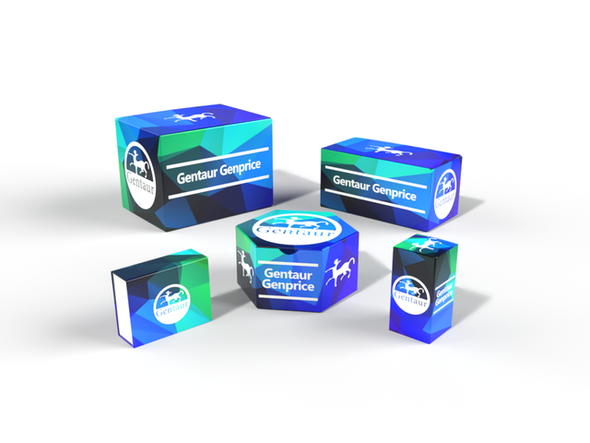749
Human IL-10 protein, His Tag | PRP100227
- SKU:
- 749-PRP100227
- Availability:
- Usually ships in 5 working days
Description
Human IL-10 protein, His Tag | PRP100227 | Gentaur UK, US & Europe Distribution
Product Category: Cytology
Application: Cytokines
Product Type: Cytokines
Sequence: Amino acid sequence derived from human IL-10 (NP_000563.1) (Ser 19-Asn 178) was expressed, with a N-terminal polyhistidine tag.
Activity: 1. Immobilized human IL-10-His at 10 μg/ml (100 μl/well) can bind Cynomolgus IL-10RA-Fc, The EC50 of Cynomolgus IL-10RA-Fc is 0.31-0.71 μg/ml. 2. Measured in a cell proliferation assay using MC/9-2 mouse mast cells. The ED50 for this effect is typically 5-20 ng/mL.
protein Lenght: The recombinant human IL-10 comprises 176 amino acids and has a predicted molecular mass of 20.9 kDa as estimated in SDS-PAGE under reducing conditions.
Preparation: HEK293 Cells
Purity: > 85 % as determined by SDS-PAGE
Formulation: Lyophilized from sterile PBS, pH 7.4
Kit Component: N/A
Features & Benefits : N/A
Molecular Weight: 20.9 kDa
Usage Note: Always centrifuge tubes before opening. It is recommended to reconstitute the lyophilized Human IL10 protein, His Tag in sterile ddH2O not less than 100µg/ml, which can then be further diluted to other aqueous solutions.
Storage Conditions: Lyophilized Human IL-10 protein, His Tagshould be stored desiccated below -20°C. Upon reconstitution, the protein should be stored at 4°C between 2-7 days and for future use below -20°C. For long term storage it is recommended to add a carrier protein (0.59% HSA or BSA) . Please prevent freeze-thaw cycles.
Shipping: The product is shipped at ambient temperature.
Background: IL-10 is a anti-inflammatory cytokine which belongs to the IL-10 family. It is produced by a variety of cell lines, including T-cells, macrophages, mast cells and other cell types, while it is produced primarily by monocytes and to a lesser extent by lymphocytes. IL-10 is mainly expressed in monocytes and Type 2 T helper cells (TH2), mast cells, CD4+CD25+Foxp3+ regulatory T cells, and also in a certain subset of activated T cells and B cells. IL-10 has pleiotropic effects in immunoregulation and inflammation. It down-regulates the expression of Th1 cytokines, MHC class II Ags, and costimulatory molecules on macrophages. It also enhances B cell survival, proliferation, and antibody production. IL-10 can block NF-kappa B activity, and is involved in the regulation of the JAK-STAT signaling pathway. Knockout studies in mice suggested the function of this cytokine as an essential immunoregulator in the intestinal tract. The importance of interleukin 10 for counteracting excessive immunity in the human body is revealed by the fact that patients with Crohn's disease react favorably towards treatment with bacteria producing recombinant IL-10. IL-10 inhibits the synthesis of a number of cytokines, including IFN-gamma, IL-2, IL-3, TNF and GM-CSF produced by activated macrophages and by helper T-cells. It also displays a potent ability to suppress the antigen-presentation capacity of antigen presenting cells. However, it is also stimulatory towards certain T cells and mast cells and stimulates B cell maturation and antibody production.
Alternative Names: CSIF; GVHDS; IL-10; IL10A; Interleukin-10; TGIF; Interleukin-10; IL10
Search Names: CSIF; GVHDS; IL-10; IL10A; Interleukin-10; TGIF; Interleukin-10; IL10
Tag: IL-10










